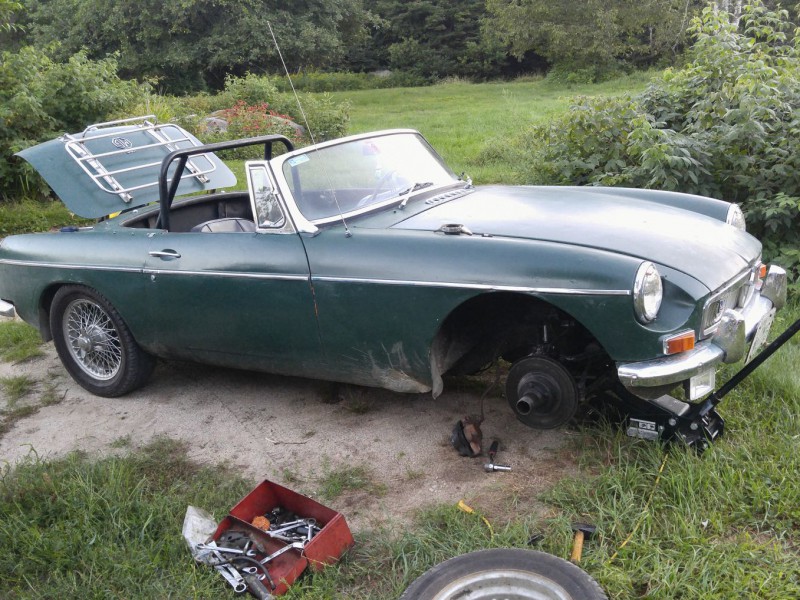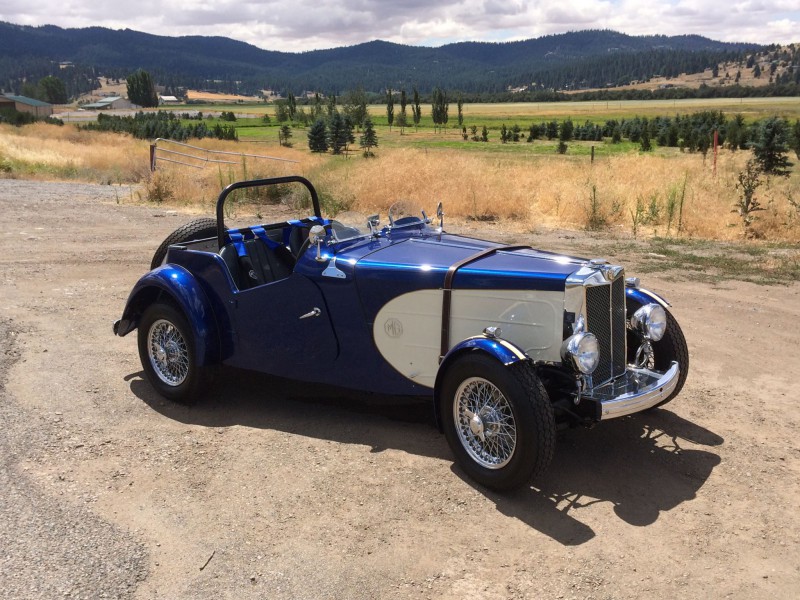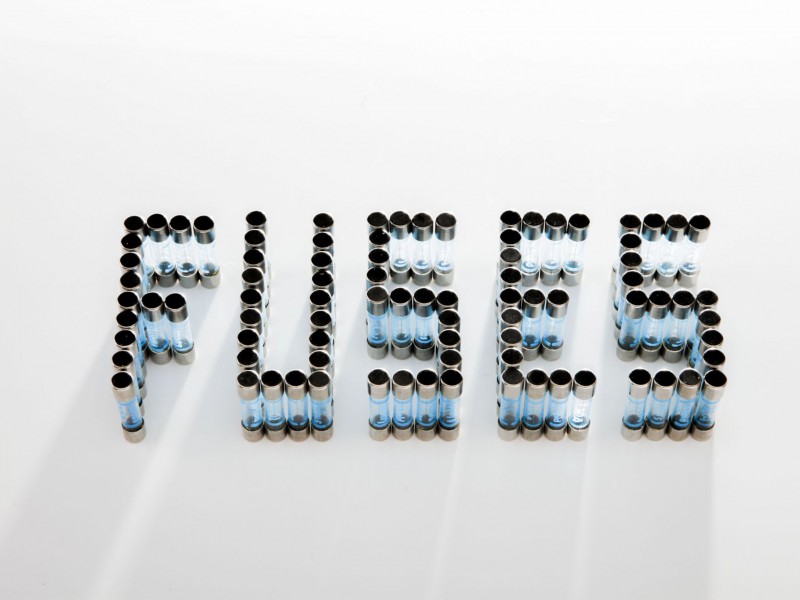On the second of June the British Sports Car Hall of Fame officially inducts its first group of members. All of us at Moss Motors are excited to be able to host the ceremony and help start what will be an annual celebration of the women and men who have made a lasting impact on the British sports car industry and hobby. There is no end to the stories of innovation, hard work, adventure, craftsmanship, bravery, skill and passion surrounding these cars. The British Sports Car Hall of Fame was started to ensure that these stories, and the community that holds them dear, thrive and continue on for generations to come. To learn more about the Hall of Fame, and to nominate and vote for future members, visit www.britishsportscarhall.org.
A lap through Hall of Fame history
Although the British sports car entered the global consciousness during the years immediately following the end of the Second World War, the foundation for their success was laid decades earlier when numerous small domestic manufacturers made a deliberate effort to build automobiles capable of sporting performance at an affordable price. Although Alvis and Riley were the early pioneers, MG’s introduction of its first bona fide sports car in 1923 established the archetype for an entire industry. With open two-seat bodywork and minimal weather equipment, these often primitive vehicles possessed highly tuned engines that offered performance equivalent to the more advanced and expensive European competition, not to mention more reasonable acquisition and running costs that would become hallmarks of later British sports cars.
In short order, MG was joined by AC, Frazer-Nash, Invicta, Morgan, Singer, Sunbeam, SS-Jaguar and Triumph, as well as numerous others, many building models that enhanced the basic roadster formula with increasing amounts of performance and better handling. Despite stiff competition from legendary marques like Alfa Romeo, Bugatti and Mercedes-Benz, British sports cars usually punched above their weight, notwithstanding their typically simplistic construction, modest engine capacities and minimal development budgets.
As was so often the case in Britain, these companies were also direct reflections of their respective managers and employees, presenting a far more human face to the world than other rivals from America and Europe. Although nominally a part of the Nuffield empire, MG’s real DNA was contributed by Cecil Kimber, while Triumph fully matured as a sports car builder under Donald Healey’s watch in the 1930s. Similarly, William Lyons was almost single-handedly responsible for his company’s transition from building sidecars to world-class sports cars.

Donald Healey
During the war, American armed forces personnel stationed in England encountered these delightful machines, often driven by dashing Royal Air Force fliers, and brought their affection for them home. Although the United Kingdom escaped the widespread devastation that had ravaged France, Italy and Germany, the British Empire was saddled with an enormous debt after almost seven years of war and badly needed hard currency to service its Lend Lease payments to the United States. In an effort to rebuild the nation’s devastated economy, the Bureau of Trade exhorted manufacturers to ‘export or die’ to earn the dollars that would allow England to survive amidst its crippling financial obligations.
Before, even affordable sports cars were owned by a select few, but after the war they became a national instrument of survival. Once again, MG was first on the scene with a lightly revised version of the pre-war TB, which was produced in record time under the guidance of men such as the irrepressible John Thornley, who would become the company’s General Manager in 1952. Notwithstanding its lack of modernity, anachronistic character, and limited production numbers, the TC paved the way for millions of other similar sports cars and set the stage for a continuing love affair between Americans and British sports cars.
Not long after the arrival of the MG TC, Jaguar introduced the XK120 to almost universal praise and an unquestioned place as the finest sports car available in the world at a reasonable price, setting the stage for even more success at the showroom and racetrack in the days ahead with contributions from men like Norman Dewis and Malcolm Sayer.
The success enjoyed by Jaguar and MG did not go unnoticed by others, leading to an extraordinary influx of British sports cars into American homes and Britain’s status as the world’s leading exporter after the United States. Triumph’s Sir John Black parlayed a presumed rivalry with William Lyons into the legendary range of TR sports cars, which usually sported coachwork penned by Giovanni Michelotti, while Donald Healey, benefitting greatly from Gerry Coker’s equally timeless designs, snatched victory from the jaws of defeat with his unforgettable Hundred, which led to the creation of the Austin-Healey marque that spawned the memorable Sprite and 3000.
Much of the sales growth around the globe was built on the success that British sports cars gained in competition around the world. It was a time of gentlemen racers and recently minted professionals, where former airman Bob Johns could race a works TR3 against living legends such as Stirling Moss, Mike Hawthorn and Juan Manuel Fangio. Many famed racers like Tony Adamowicz started out in small-bore British sports cars, while even more illustrious competitors such as Bob Tullius and his Group 44 won dozens of championships campaigning Jaguars, MGs, and Triumphs. Often hamstrung by limited funding, Kas Kastner pioneered how to win on a budget, beating better supported rivals on a regular basis all his life. Beating more vaunted competition became the hallmark of rally ace John Sprinzel, who drove his Sprites and Minis faster and harder than anyone could imagine, thanks in large part to MG engine guru Jimmy Cox.

Stirling and Pat Moss both drove for John Sprinzel’s team at Sebring in the Four-Hour GT race in 1961. This was the only time the two competed with each other on a race track.

Sir Stirling Moss
But the competition success was only part of the reason for the continued success on showrooms around the country, it was also the efforts of publicity men and sales executives like Michael Cook and Michael Dale that pushed cars out the door. Authors such as Richard Langworth and Graham Robson chronicled the industry after years spent on the inside, while Peter Egan later gave voice to generations of British sports car lovers with his column at Road & Track. The role of the classic car clubs cannot be forgotten either, led by dedicated individuals such as Richard Knudson and Ken Smith. But keeping the cars on the road became increasingly important, especially as the cars and their owners grew older, allowing men like John Twist to make a name for himself as a wrench nonpareil.

Peter Egan
But if increasingly draconian safety and emissions regulations helped doom the prospects of the British sports car in the American market, which were not helped by a shift in consumer tastes away from convertibles towards more capable and functional sports coupes, the legacy of what these vehicles meant and represented was created, nurtured, and protected by the men described above. That we now have a mechanism to honor their contributions is the real reason behind the formation of the British Sports Car Hall of Fame. Everyone that drives an LBC owes a debt to these individuals, and countless others like them that will be recognized in successive induction cycles. We hope that you’ll join us in June for the Hall’s opening.

The Moss Motors showroom in Petersburg, Virginia, will maintain a growing collection of British Sports Car Hall of Fame memorabilia, literature, photographs and more.








'Making History' has no comments
Be the first to comment this post!